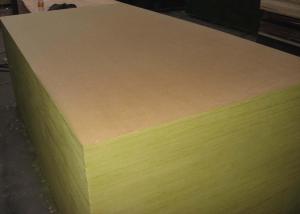Plywood, a versatile and widely used material, has been a staple in the construction and woodworking industries for decades. One of its unique offerings is the 1 1/2-inch thickness, which provides a distinct advantage for special projects that require a bit more substance and durability. This article delves into the world of 1 1/2-inch plywood, exploring its applications, benefits, and how it can be a game-changer for your next creative endeavor.
The Beauty of Plywood
Plywood is an engineered wood product made from thin layers of wood veneer, or plies, that are glued together under heat and pressure. The grain of each layer is positioned at right angles to the adjacent layers, creating a strong and stable material. This construction method allows plywood to resist warping, cracking, and twisting, making it ideal for a variety of applications.
Why 1 1/2 Inches?
The 1 1/2-inch thickness of plywood is not as common as the standard 1/2-inch or 3/4-inch options, but it offers unique benefits for specific projects. It provides additional strength and rigidity, making it perfect for heavy-duty applications such as support beams, countertops, and large furniture pieces. This thickness also allows for more intricate joinery and design elements that may not be possible with thinner plywood.
Applications of 1 1/2-Inch Plywood
1. Furniture Making: The extra thickness adds a sense of sturdiness and quality to furniture pieces. It’s ideal for tables, chairs, and storage units that need to support significant weight.
2. Structural Elements: In construction projects, 1 1/2-inch plywood can be used for sheathing, flooring underlayment, and even as a substitute for traditional timber beams in some cases.
3. Art and Sculpture: For artists, the robust nature of 1 1/2-inch plywood allows for large-scale projects with intricate detailing that can withstand the test of time.
4. Outdoor Projects: Its durability makes it suitable for outdoor furniture, planters, and even garden structures that need to withstand the elements.
5. Custom Cabinets and Shelving: The thickness provides a solid foundation for custom-built cabinetry and shelving, ensuring they can handle heavy loads without sagging.
The Emotional Connection to Plywood
Working with plywood, especially the 1 1/2-inch variety, can evoke a sense of nostalgia. Many of us have fond memories of family projects or childhood furniture made from this material. It’s a connection that speaks to the heart, reminding us of simpler times and the joy of creating something with our own hands.
The Sustainability Factor
Plywood is often considered a sustainable choice due to its efficient use of wood fibers and the fact that it can be made from a mix of hardwoods and softwoods. The 1 1/2-inch thickness doesn’t compromise this eco-friendliness, allowing you to create with a clear conscience.
Overcoming Challenges with 1 1/2-Inch Plywood
While the benefits are many, working with 1 1/2-inch plywood can present some challenges. It’s heavier and more difficult to cut and maneuver compared to thinner sheets. However, with the right tools and techniques, these challenges can be easily overcome.
Tools and Techniques for Working with 1 1/2-Inch Plywood
1. Power Tools: Circular saws, table saws, and routers are essential for cutting and shaping this thicker material with precision.
2. Safety Gear: Always wear safety glasses, gloves, and ear protection when working with power tools and heavy materials.
3. Proper Support: When cutting or moving large sheets, ensure you have adequate support to prevent injury or damage.
4. Patience and Precision: Take your time when working with 1 1/2-inch plywood to ensure clean cuts and accurate measurements.
The Future of 1 1/2-Inch Plywood
As design trends evolve and the demand for durable, sustainable materials grows, the use of 1 1/2-inch plywood is likely to increase. Its unique properties make it a valuable resource for both professional woodworkers and DIY enthusiasts alike.
In Conclusion
1 1/2-inch plywood is more than just a material; it’s a canvas for creativity, a symbol of durability, and a testament to the ingenuity of engineered wood products. Whether you’re a seasoned woodworker or a beginner looking to tackle a special project, this unique thickness of plywood offers endless possibilities. So, the next time you find yourself in need of a material that can handle the weight of your ideas, consider reaching for that sheet of 1 1/2-inch plywood.

